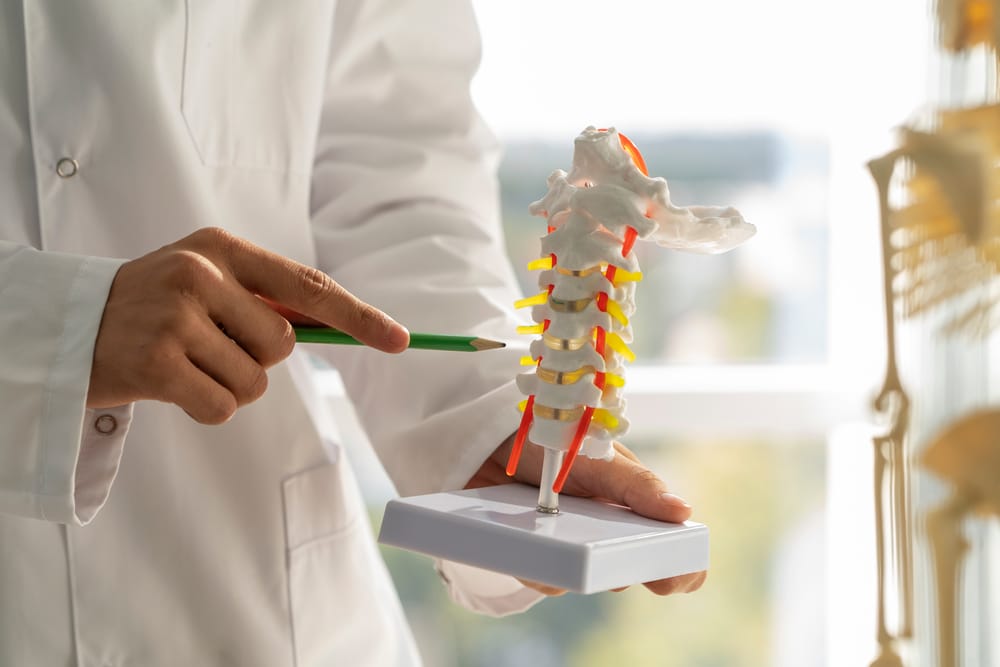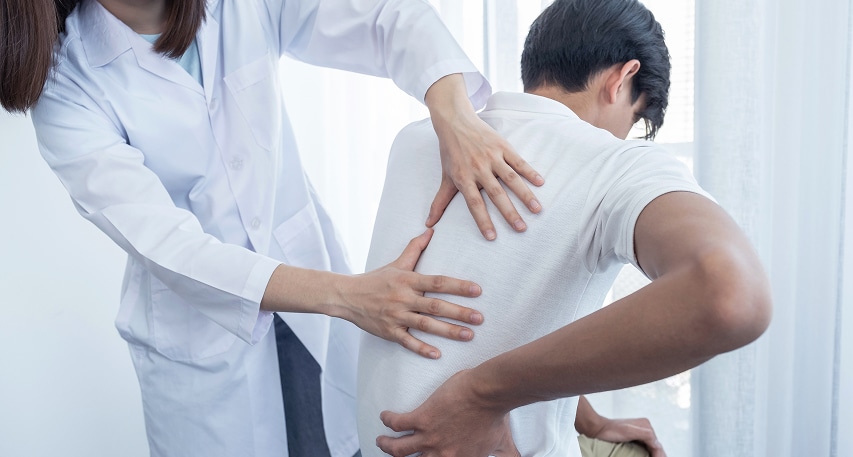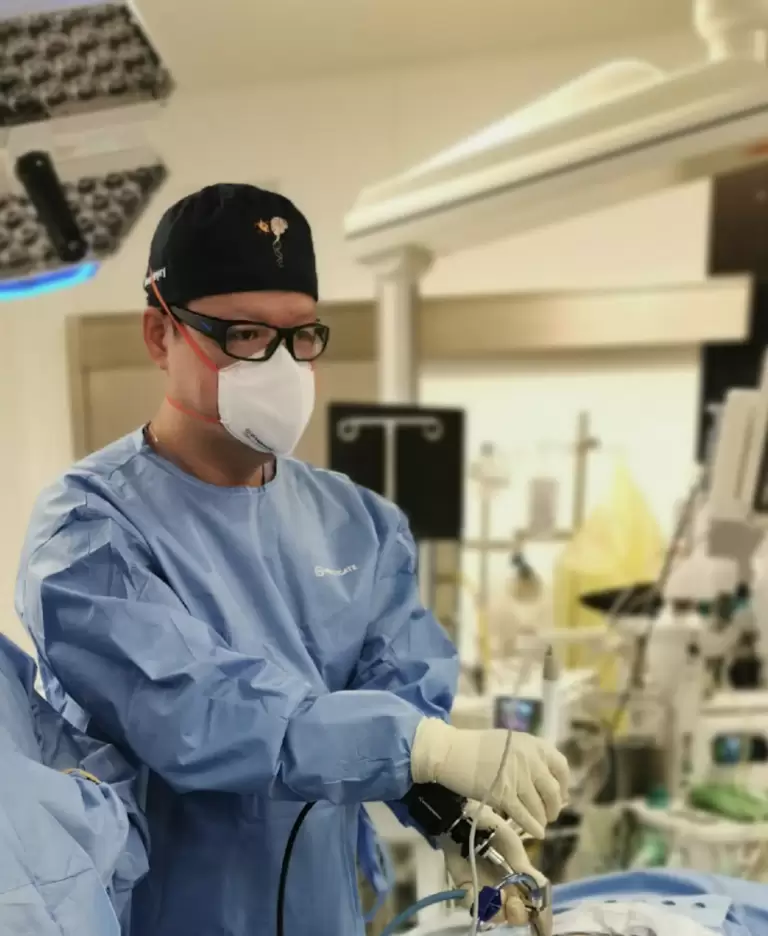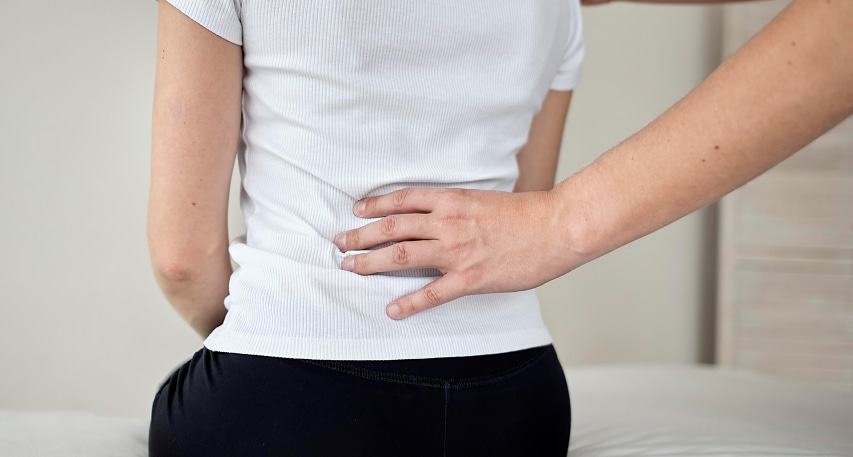
A slipped disc, also known as a herniated disc, occurs when one of the spinal discs is pushed out of place, pressing on surrounding nerves. This condition can lead to persistent back pain and even discomfort in the limbs. In Singapore, many individuals experience this issue due to age, posture, or lifestyle habits. Early assessment and timely treatment are essential.
What Is a Herniated or Slipped Disc?
A herniated disc, also known as a slipped disc, refers to a condition where the soft, gel-like inner portion of a spinal disc leaks out through a tear in the outer layer. This displaced material may compress nearby spinal nerves, resulting in pain, numbness, or weakness, especially in the lower back or neck.
The condition often affects individuals aged 30 to 50, and may result from gradual disc wear or sudden strain, and it Some people may not experience symptoms, while others may struggle with persistent slip disc pain.
Treatment options depend on the severity and may include physiotherapy, medication, or, in certain cases, surgery. Identifying the cause early helps guide appropriate management and prevent complications.
Causes of a Herniated or Slipped Disc
A slipped disc or herniated disc often results from disc degeneration, where spinal discs lose flexibility and cushioning over time. This natural ageing process makes discs more prone to injury. Common causes include sudden lifting, repetitive bending or twisting, and poor posture during physical activity. Accidents, such as falls or direct impact, can also trigger disc displacement.
Prolonged sitting and sedentary habits may increase spinal pressure, especially in the lower back. These factors can place undue stress on the spine, leading to the rupture or bulging of the disc, which may compress nearby nerves and cause discomfort.
Symptoms of a Herniated or Slipped Disc
The symptoms of a herniated disc often depend on the location and extent of the disc pressing against surrounding nerves. While some individuals may experience mild discomfort, others may face more noticeable issues affecting daily movement and quality of life.
Localised or Radiating Pain
Pain may develop at the site of the affected disc, such as the neck or lower back. In many cases, pain radiates to the arms or legs, especially when walking, standing, or sitting for long periods.
Numbness or Tingling
Affected nerves may cause a sensation of pins and needles, usually in the limbs. This is often described as a burning or electric-like sensation.
Muscle Weakness
Nerve compression can interfere with muscle control, leading to weakness in the arms or legs and difficulty lifting or gripping objects.
Reduced Mobility
Limited spinal movement, stiffness, or a noticeable reduction in flexibility can occur. These symptoms may worsen with activity and ease with rest.
If symptoms persist or worsen, medical evaluation is recommended.
Diagnosing a Herniated or Slipped Disc
Diagnosing a herniated disc or slip disc involves a thorough evaluation to determine the source of symptoms and guide appropriate treatment. Doctors typically begin with a clinical assessment before recommending imaging or nerve tests for confirmation.
Physical Assessment
A spine specialist will assess your posture, spinal movement, muscle strength, and reflexes. They may check for signs of nerve involvement, such as numbness, weakness, or reduced response to stimuli in the arms
or legs.
MRI Scan
Magnetic Resonance Imaging (MRI) is commonly used to detect herniated discs. It provides clear images of soft tissues, allowing doctors to pinpoint the exact location of disc bulges or nerve compression.
CT Scan or X-ray
While not as detailed as an MRI, a CT scan or X-ray may be used to rule out other spinal problems like bone spurs or fractures that can produce similar symptoms to slip disc pain.
Nerve Conduction Studies
If symptoms are unclear or persistent, nerve tests such as electromyography (EMG) and nerve conduction studies may be performed. These help identify nerve damage and confirm whether nerve roots are affected by disc herniation.
Treatment Options for Herniated or Slipped Disc
Treatment for a herniated disc depends on the severity of symptoms, level of nerve involvement, and how daily activities are affected. At Achieve Spine And Orthopaedic Centre, our approach focuses on easing nerve irritation, reducing pain, and helping patients regain comfortable movement in daily activities.

Non-Surgical Treatments
1. Physical Therapy
Physiotherapy is often the first course of treatment. A structured programme helps relieve pressure on the spine, strengthen surrounding muscles, and improve flexibility. Specific exercises are used to stabilise the spine and reduce recurrence.
2. Medication
Non-steroidal anti-inflammatory drugs (NSAIDs) may be prescribed to reduce inflammation and ease pain. Muscle relaxants and nerve pain medications may also be used depending on individual symptoms.
3. Activity Modification
Patients are advised to avoid activities that worsen slip disc pain, such as heavy lifting or prolonged sitting. Gradual reintroduction of low-impact movement supports recovery without overstraining the spine.
4. Epidural Steroid Injections
In cases where nerve irritation causes significant pain, corticosteroid injections may be considered. These are administered into the epidural space to reduce inflammation and nerve sensitivity.
5. Bracing or Support Devices
Short-term use of lumbar support belts or braces may help stabilise the spine and reduce strain during movement, particularly for those in the early stages of recovery.

Minimally Invasive Endoscopic Spine Surgery
When non-surgical methods do not lead to meaningful improvement, minimally invasive endoscopic spine surgery may be recommended. This procedure involves a small incision through which an endoscope and specialised instruments are used to access the affected disc.
Unlike traditional open surgery, this technique preserves surrounding tissues and minimises post-operative discomfort. Most patients experience shorter recovery times, with many resuming light activities within days. This option is particularly suited for individuals with persistent herniated disc symptoms such as radiating pain, numbness, or weakness, especially when conservative treatments have failed.
Surgery is considered based on symptom severity, quality of life impact, and imaging findings. A thorough consultation with a spine specialist can help determine if endoscopic spine surgery is an appropriate choice for long-term relief and functional recovery.
Preventing a Herniated or Slipped Disc
While not all causes of a herniated disc can be avoided, certain lifestyle changes may help reduce the risk and support long-term spinal health. These habits aim to protect the spine from unnecessary strain
and wear.
Stay Active
Engaging in regular low-impact activities such as walking, swimming, or stretching helps maintain flexibility, strengthen core muscles, and support spinal stability.
Practise Good Posture
Whether sitting at a desk or standing for long periods, proper posture helps reduce pressure on the spinal discs and prevents uneven strain on the spine.
Lift Carefully
Use safe lifting techniques by bending at the knees and keeping the back straight to avoid sudden stress on the lower back.
Maintain a Healthy Weight
Keeping your weight within a healthy range reduces the overall load on your spine and slows disc degeneration.
Avoid Smoking
Smoking may reduce blood flow to spinal discs, weakening them over time and increasing the likelihood of disc problems.

Managing Risks and Recovery Expectations
Recovery from a herniated disc or slip disc takes time and varies from person to person. Many individuals improve with rest, physiotherapy, and gradual return to daily routines. For those who require specific treatment or even surgery for a slipped disc, recovery will depend on the specific procedure and individual health factors.
Most patients can resume light activities within weeks, but full recovery may take longer. Adopting spine-friendly habits and following medical advice is key to preventing future disc problems. Regular check-ins and lifestyle adjustments play an important role in maintaining spinal health and avoiding recurrence of symptoms.

Wu Pang Hung
ABOUT AUTHOR
Dr. Wu Pang Hung is an experienced orthopaedic and spine surgeon in Singapore, specialising in both uniportal and biportal endoscopic spine procedures for complex cervical, thoracic, and lumbar spinal conditions. With over 10 years in the field, he is actively involved in numerous spine societies and contributes to several international journals and textbooks. Dr. Wu has also received specialised training in spine surgery across Canada, South Korea, Japan, and Germany.
Contact Us
WHATSAPP US @+65 9746 6178
CALL US @+65 9746 6178
MAKE AN APPOINTMENT
Frequently Asked Questions (FAQs)
Can I live a normal life after a slipped disc?
Yes, many individuals are able to return to their usual daily routines following appropriate treatment. This may include physiotherapy, medication, or minimally invasive surgery if symptoms persist. It’s important to follow medical advice, practise good posture, and maintain a regular exercise routine to support long-term recovery and prevent recurrence. With proper care, a good quality of life is achievable.
Is a herniated disc a permanent condition?
Not necessarily. In many cases, symptoms of a herniated disc can improve over time with rest, physiotherapy, and pain management. However, some people may experience ongoing discomfort or nerve irritation that requires additional treatment. For persistent or worsening cases of slipped disc, treatment options such as epidural injections or surgery may be considered to address nerve compression and restore function.
Can I still exercise if I have a herniated or slipped disc?
Yes, but you should choose exercises carefully. Low-impact activities like walking, swimming, and stretching are usually safe and beneficial. These can help improve flexibility and strengthen muscles that support the spine. Avoid high-impact or heavy lifting exercises unless cleared by a healthcare professional.
What are signs that I might need surgery for a slip disc?
Surgery may be recommended if you experience severe slip disc pain, ongoing numbness, muscle weakness, or difficulty walking that does not improve with non-surgical care. Sudden loss of bladder or bowel control is also a sign of possible nerve compression and may require immediate attention. Minimally invasive endoscopic spine surgery may be considered for suitable candidates when other treatments have not provided relief.
Can a herniated disc come back after treatment?
Yes, recurrence is possible, especially if the underlying causes are not addressed. Poor posture, sedentary lifestyle, or improper lifting techniques can place continued strain on the spine. Maintaining a healthy weight, staying active, and following preventive measures can reduce the risk of a herniated disc returning. Periodic reviews with your spine specialist may also help monitor spinal health.
